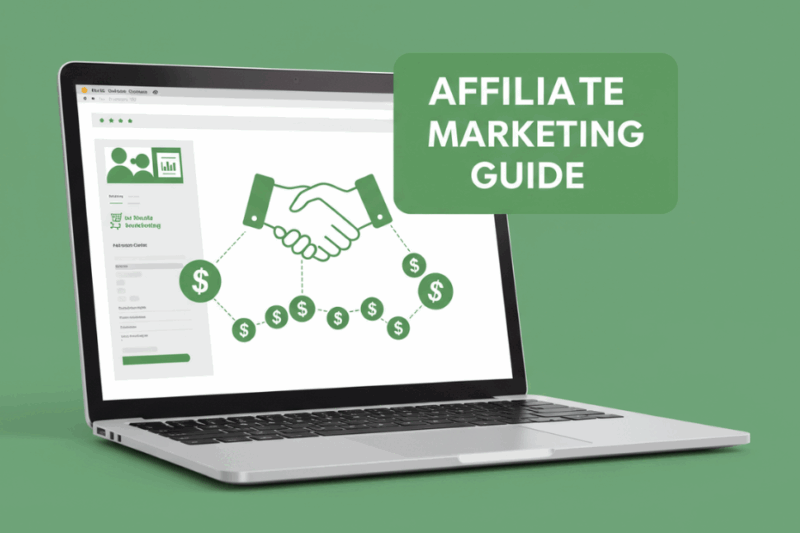Google Ads is a powerful platform for driving targeted traffic to your website, leveraging its massive reach of over 8.5 billion daily searches in 2025. Whether you’re a small business, blogger, or e-commerce store, Google Ads can help you attract visitors and grow your online presence. This guide walks you through the steps to set up and optimize a Google Ads campaign to maximize website traffic while staying cost-effective.

Step 1: Set Up Your Google Ads Account
Getting started with Google Ads is straightforward and sets the foundation for your campaign.
- Create an Account: Visit ads.google.com, sign in with a Google account, and follow the prompts to set up a business profile.
- Define Your Goal: Select “Website Traffic” as your campaign objective to focus on driving clicks to your site.
- Set a Budget: Start with a daily budget you can afford (e.g., $5–$20). Google allows flexible adjustments later.
- Tip: Use Google’s guided setup for beginners, but switch to “Expert Mode” for more control over settings.
Step 2: Choose the Right Campaign Type
Google Ads offers multiple campaign types, but not all are ideal for driving website traffic.
- Search Campaigns: Best for targeting users actively searching for your products or services (e.g., “best running shoes 2025”).
- Display Campaigns: Use for visual ads on websites across Google’s Display Network to boost brand awareness.
- Performance Max: Combines search, display, and YouTube ads for broader reach, ideal for e-commerce.
- Recommendation: Start with a Search campaign for precise targeting, then experiment with Display or Performance Max for scale.
Step 3: Conduct Keyword Research
Keywords determine who sees your ads, so choosing the right ones is critical.
- Use Google Keyword Planner: Access this free tool in Google Ads to find keywords relevant to your website. Focus on terms with high search volume and low-to-medium competition.
- Target Long-Tail Keywords: Specific phrases like “affordable vegan meal delivery” attract qualified traffic and cost less than broad terms like “food delivery.”
- Match Types:
- Broad Match: Reaches a wide audience but may include irrelevant clicks.
- Phrase Match: Targets searches containing your keyword (e.g., “vegan meal delivery”).
- Exact Match: Shows ads only for precise searches (e.g., [vegan meal delivery]).
- Add Negative Keywords: Exclude terms like “free” or “cheap” if they don’t align with your offerings to avoid wasted clicks.
- Tip: Aim for 5–10 keywords per ad group to start, refining based on performance.
Step 4: Craft Compelling Ad Copy
Your ad copy needs to grab attention and drive clicks without misleading users.
- Write Clear Headlines: Use keywords in your headline (e.g., “Shop Vegan Meal Delivery Today”) and keep it under 30 characters.
- Highlight Benefits: Focus on what sets you apart, like “Fast Shipping” or “100% Organic Meals.”
- Include a Strong CTA: Use action words like “Shop Now,” “Learn More,” or “Get Started.”
- Use Ad Extensions: Add sitelinks (e.g., to specific pages like “About Us”), callouts (e.g., “Free Shipping”), or location extensions to enhance your ad.
- Example: For a fitness blog, an ad might read: “Best Home Workouts 2025 – Free Plans & Tips, Start Today!”
- Tip: Create 2–3 ad variations per ad group to test what resonates best.
Step 5: Optimize Your Landing Page
A great ad is only as effective as the page it directs to. Ensure your landing page converts visitors.
- Match Ad to Page: If your ad promotes “vegan meal plans,” the landing page should focus on that, not a generic homepage.
- Fast Load Times: Aim for under 3 seconds using tools like Google PageSpeed Insights.
- Clear CTA: Include buttons like “Sign Up” or “Shop Now” that align with your ad’s goal.
- Mobile-Friendly Design: Over 60% of searches are mobile, so ensure your page is responsive.
- Tip: Use tools like Unbounce or WordPress to create targeted landing pages.
Step 6: Set Up Conversion Tracking
Tracking helps you measure success and optimize for better results.
- Install Google Ads Tag: Add the tracking code to your website to monitor actions like form submissions or page visits.
- Link Google Analytics 4: Gain deeper insights into user behavior post-click.
- Define Conversions: Set up goals like “time on site” or “clicks to a specific page” to track meaningful actions.
- Tip: Start with simple conversions, like visits to a key page, before tracking complex actions like purchases.
Step 7: Choose a Bidding Strategy
Your bidding strategy determines how Google spends your budget to drive traffic.
- Maximize Clicks: Automatically bids to get the most clicks within your budget, ideal for beginners.
- Manual CPC: Set your own bid for each keyword, offering more control but requiring experience.
- Target Impression Share: Prioritizes ad visibility on search results, useful for brand awareness.
- Recommendation: Start with Maximize Clicks for simplicity, then switch to Manual CPC once you identify high-performing keywords.
- Tip: Set a maximum cost-per-click (CPC) cap to avoid overspending (e.g., $1–$2 for small budgets).
Step 8: Target Your Audience
Refine who sees your ads to attract relevant traffic.
- Location Targeting: Focus on specific cities, regions, or countries where your audience is.
- Demographics: Adjust for age, gender, or income level if relevant (e.g., target 25–34-year-olds for fitness gear).
- Audience Segments: Use Google’s in-market or affinity audiences (e.g., “Fitness Enthusiasts”) to reach users likely to engage.
- Tip: Start narrow (e.g., one city) to test, then expand as you see results.
Step 9: Monitor and Optimize Your Campaign
Regular optimization ensures your budget drives maximum traffic.
- Check Performance Weekly: Use Google Ads’ dashboard to track metrics like click-through rate (CTR, aim for 2–5%), CPC, and impressions.
- Pause Underperforming Keywords: Remove keywords with high costs but low clicks or conversions.
- Test New Ads: Rotate ad copy or visuals to find what drives the most traffic.
- Use Recommendations: Google’s Recommendations tab suggests optimizations, like adding new keywords or adjusting bids.
- Tip: Allocate 10–20% of your budget to testing new keywords or ad formats.
Step 10: Scale and Experiment
Once your campaign is driving steady traffic, expand its impact.
- Increase Budget Gradually: If you’re seeing a good return (e.g., high CTR, low CPC), boost your daily budget by 10–20%.
- Try New Campaign Types: Add Display or Video campaigns to complement Search ads.
- Leverage Retargeting: Show ads to users who visited your site but didn’t convert, using Google’s remarketing tools.
- Example: A local bakery could retarget users who visited their “Order Cakes” page with a discount ad.
Common Mistakes to Avoid
- Broad Keywords: Avoid generic terms like “shoes” that attract irrelevant clicks.
- Ignoring Negative Keywords: Not excluding irrelevant terms wastes budget.
- Poor Landing Pages: A slow or irrelevant page leads to high bounce rates.
- Set-and-Forget: Campaigns need regular tweaks to stay effective.
Conclusion
Google Ads is a game-changer for driving website traffic in 2025, offering precise targeting and measurable results. By setting clear goals, researching keywords, crafting compelling ads, and optimizing regularly, you can attract high-quality visitors without overspending. Start small with a $5–$10 daily budget, monitor performance, and scale as you refine your strategy. Head to ads.google.com to launch your first campaign and watch your website traffic grow.


